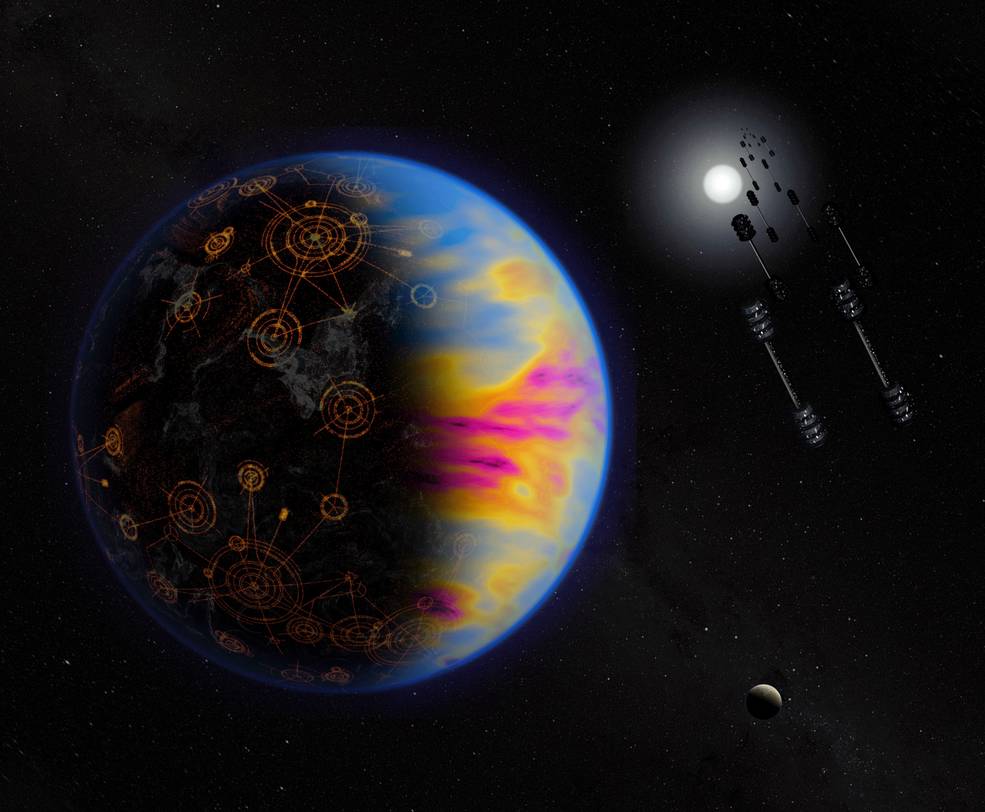Pollution on other planets could help us find aliens, Nasa says
The gas could be a ‘technosignature’ and indicate industrialised processes

Aliens could be detected by measuring atmospheric pollution on other planets, according to new research.
A study by the space agency examined the presence of nitrogen dioxide gas, which is produced on Earth by burning fossil fuels.
While the evolution of a civilisation that has developed to oil- or coal-based industries seems slim, the gas is also sourced from other materials including lightning and biological processes.
“On Earth, most of the nitrogen dioxide is emitted from human activity - combustion processes such as vehicle emissions and fossil-fueled power plants,” said Ravi Kopparapu of Nasa’s Goddard Space Flight Center in Greenbelt, Maryland.
“In the lower atmosphere (about 10 to 15 kilometers or around 6.2 to 9.3 miles), NO2 from human activities dominate compared to non-human sources. Therefore, observing NO2 on a habitable planet could potentially indicate the presence of an industrialized civilization.”
Nitrogen dioxide gas could be what scientists call a “technosignature”, which is when there is presence of a gas that is released as a byproduct of an industrial process. This is similar to a biosignature, which are gases such as oxygen and methane produced by organic activity.
Due to the huge number of planets in the universe, as well as their distance, scientists need to use these indications - which can be measured at great distances - to determine which worlds are worth investigating.
“Other studies have examined chlorofluorocarbons (CFCs) as possible technosignatures, which are industrial products that were widely used as refrigerants until they were phased out because of their role in ozone depletion,” said Jacob Haqq-Misra, a co-author of the paper at the Blue Marble Institute of Science, Seattle, Washington.
“CFCs are also a powerful greenhouse gas that could be used to terraform a planet like Mars by providing additional warming from the atmosphere. As far as we know, CFCs are not produced by biology at all, so they are a more obvious technosignature than NO2. However, CFCs are very specific manufactured chemicals that might not be prevalent elsewhere; NO2, by comparison, is a general byproduct of any combustion process.”
Scientists used computer modelling to predict whether nitrogen dioxide could produce a signal that is able to detect with current and future telescopes. The gas absorbs some colours of visible light, meaning that it can be measured by observing light reflected from the planet.
A planet similar to the Earth could be detected up to 30 light-years away over 400 hours using a large Nasa telescope; while this is a huge amount of time to study a single planet, it is not unprecedented. Nasa’s Hubble Telescope took a similar amount of time for the Hubble Deep Field Observations which has helped scientists study dark matter.
“On Earth, about 76 per cent of NO2 emissions are due to industrial activity,” said Giada Arney of Nasa Goddard, a co-author of the paper. “If we observe NO2 on another planet, we will have to run models to estimate the maximum possible NO2 emissions one could have just from non-industrial sources. If we observe more NO2 than our models suggest is plausible from non-industrial sources, then the rest of the NO2 might be attributed to industrial activity.
“Yet there is always a possibility of a false positive in the search for life beyond Earth, and future work will be needed to ensure confidence in distinguishing true positives from false positives.”
There are benefits and complications to using nitrogen dioxide to look for alien worlds. Happily, stars that are cooler and more common than our sun produce less ultraviolet light (which breaks down the gas) and therefore increases the chance that extraterrestrial life can be found.
Conversely, however, clouds or aerosols in the atmosphere could mimic the signature of the gas making it more challenging to detect - although researchers are developing 3D models in order to more accurately map results and deal with these potential imperfections.
The research is published online Tuesday, February 9 in arXiv.
Subscribe to Independent Premium to bookmark this article
Want to bookmark your favourite articles and stories to read or reference later? Start your Independent Premium subscription today.

Join our commenting forum
Join thought-provoking conversations, follow other Independent readers and see their replies